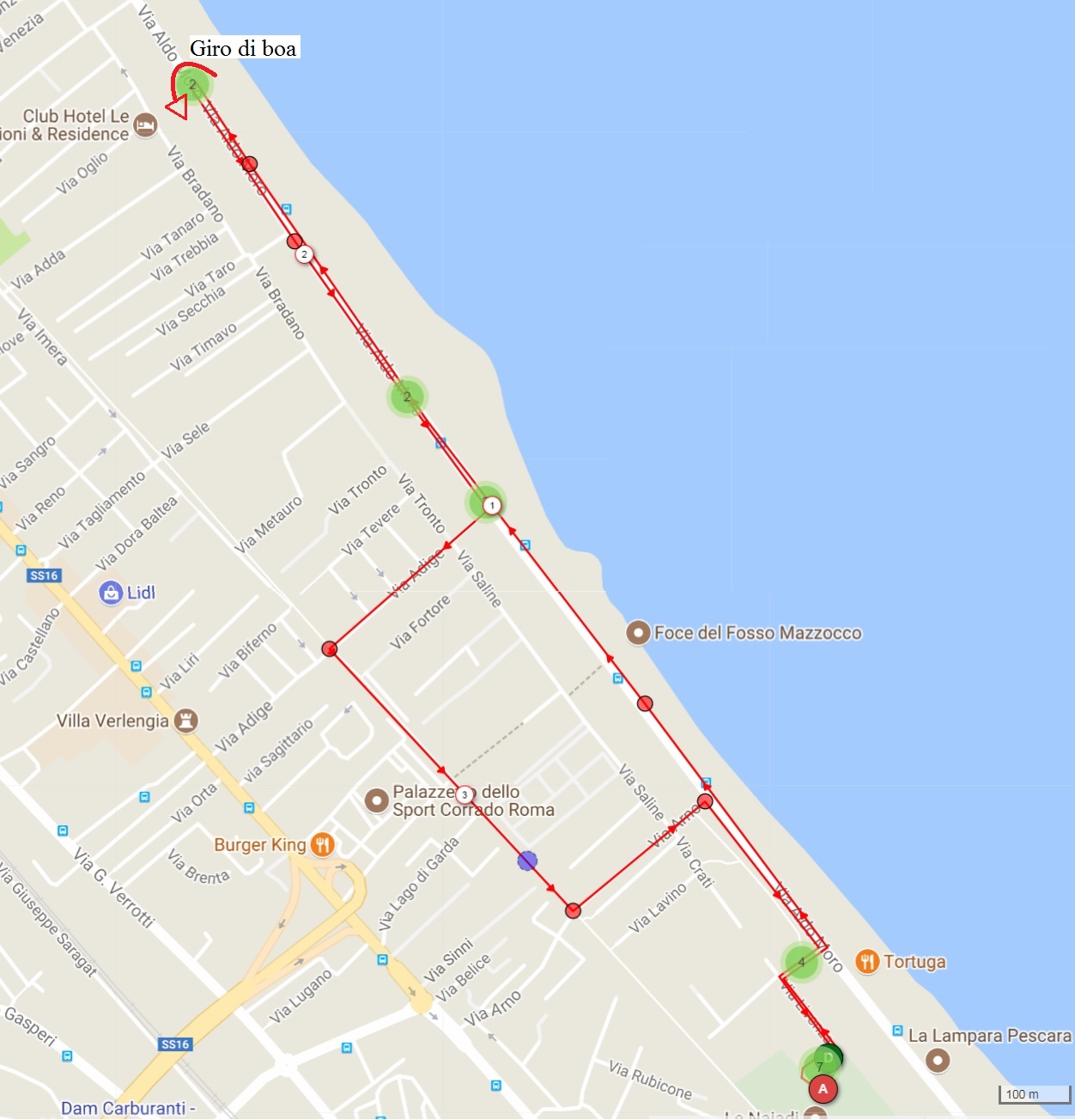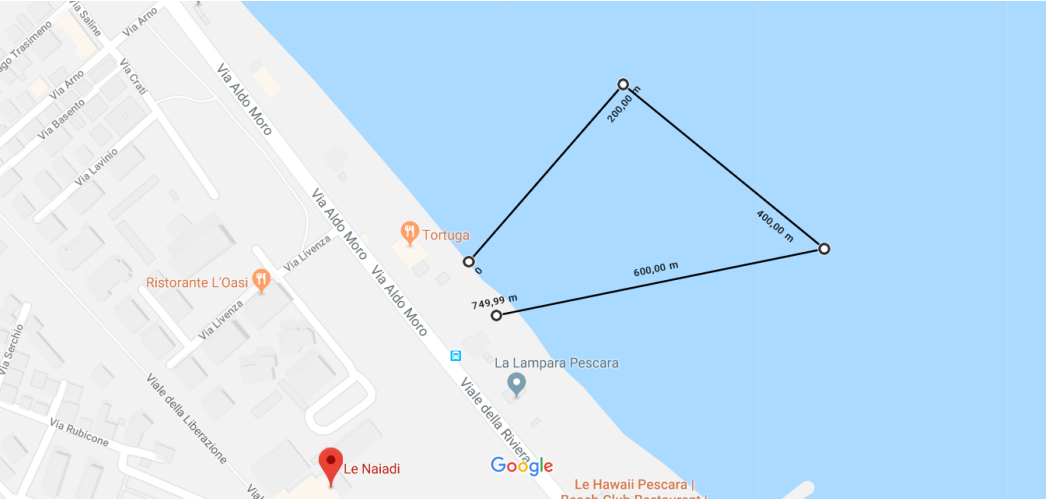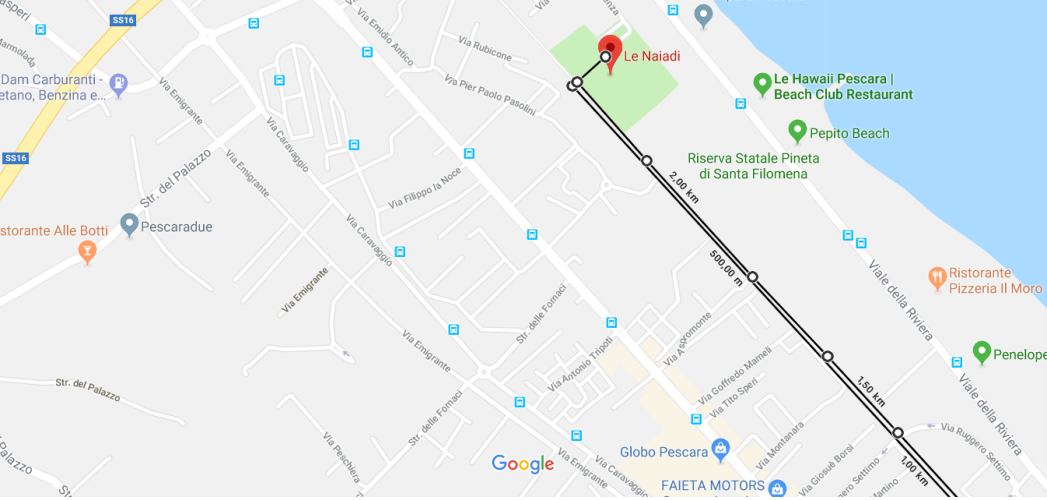PRESENTAZIONE
Pescara è una città nuovissima.
Ancora dopo la prima guerra mondiale, alla foce del fiume omonimo esistevano due cittadine molto diverse tra loro. A sud la più antica Pescara (ora Portanuova), cresciuta sui resti della fortezza cinquecentesca che presidiava il fiume e la statale 16 Adriatica all'innesto della Via Tiburtina-Valeria sbocco della più importante valle d'Abruzzo. Dopo la costruzione della ferrovia, dei bastioni non resta quasi nulla, e poco anche del successivo insediamento (il Bagno penale e alcuni modesti edifici tra cui la casa di D'Annunzio).
A nord del fiume, nella stretta fascia di terra che si allunga tra le colline e il mare si era invece sviluppata dal 1806, prendendo a fulcro il santuario della Madonna dei Sette Dolori, Castellammare Adriatico, che con l'arrivo della ferrovia e la costruzione della Stazione (1863) aveva avuto un certo sviluppo.
Commerciale, artigianale e 'popolare' Pescara; borghese, signorile e turistico Castellammare Adriatico, ancora al principio del XX secolo scandito dalle grandi ville dei possidenti.
La fusione dei due comuni (1926) avvenne, patrocinante Gabriele D'Annunzio, con la nomina a capoluogo di una piccola provincia ricavata da quelle di Chieti e Teramo, a cavallo del fiume.
I nuovi edifici del capoluogo si realizzano il più possibile lungo l'Adriatica, oggi corso Vittorio Emanuele, che continua a essere la principale arteria cittadina, e unisce i due nuclei attraverso un ponte, edificato nel 1934: il Tribunale, la Camera di Commercio, il tempio della Conciliazione in lato Portanuova; in lato Castellammare Adriatico il Banco di Napoli, le Poste, il Comune, la Provincia, questi ultimi a formare una grande piazza monumentale (piazza dei Vestini, oggi Italia) che avrebbe costituito il nuovo centro cittadino. Nasce inoltre il quartiere di case popolari detto dei Pescatori (1934) e viene compiuta (1939) la bonifica dei terreni tra la vecchia Pescara e il mare.
La densa occupazione delle aree centrali successiva alla ricostruzione postbellica porta la città a espandersi verso l'esterno. La realizzazione della zona industriale tra Pescara e Chieti, i collegamenti autostradali e l'asse attrezzato, l'insediamento di alcune Facoltà dell'Università D'Annunzio, le nuove sedi di uffici regionali e statali, la nuova Stazione centrale delle Ferrovie dello Stato, il porto turistico modificano ancora il quadro generale offrendo nuove possibilità e preparando Pescara alla sfida con il terzo millennio.
|
PRESENTATION Even after the First World War, two very different towns existed at the mouth of the river. To the south, the most ancient Pescara (now Portanuova), grown on the remains of the 16th century fortress that guarded the river and the road 16 Adriatica to the insertion of the Via Tiburtina-Valeri, outlet of the most important valley of Abruzzo. After the construction of the railway, almost nothing remains of the ramparts, and little even of the subsequent settlement (the penal toilet and some modest buildings including the house of D'Annunzio). To the north of the river, in the narrow strip of land that stretches between the hills and the sea was instead developed since 1806, taking at the fulcrum the sanctuary of the Madonna dei Sette Dolori, Castellammare Adriatico, which with the arrival of the railway and the construction of the Station (1863) had had some development. Commercial, artisanal and 'popular' Pescara; bourgeois, stately and tourist Castellammare Adriatico, still at the beginning of the 20th century were marked by the great villas of the owners. The merger of the two municipalities (1926) occurred, patronized by Gabriele D'Annunzio, with the appointment as chief town of a small province derived from those of Chieti and Teramo, straddling the river. The new buildings of the capital are made as much as possible along the Adriatic, now Corso Vittorio Emanuele, which continues to be the main artery of the city, and joins the two nuclei through a bridge, built in 1934: the Court, the Chamber of Commerce, the Temple of Conciliation on the Portanuova side; in the Castellammare Adriatico side the Banco di Napoli, the Post Office, the Municipality, the Province, the latter forming a large monumental square (Piazza dei Vestini, today Italy) which would have constituted the new city center. The district of public housing called "dei Pescatori" (1934) was also founded and the land reclamation between the old Pescara and the sea was completed (1939). The dense occupation of the central areas after post-war reconstruction leads the city to expand outward. The construction of the industrial area between Pescara and Chieti, the motorway links and the equipped axis, the establishment of some Faculties of the D'Annunzio University, the new regional and state offices, the new Central Railway Station of the State, the tourist port still modifies the general framework by offering new possibilities and preparing Pescara for the challenge with the third millennium. |
INFORMAZIONI GARA
- PROGRAMMA
SABATO 23 GIUGNO 2018
GRAND PRIX – QUALIFICA TRIATHLON SPRINT ( 750 mt Nuoto\20 Km bici \5,0 Km corsa )
07:30 Apertura segreteria e ritiro pacchi gara (presso Centro Sportivo Le Naiadi)
08:00 Apertura Zona Cambio Uomini e Donne
09:00 Partenza GRAND PRIX - QUALIFICA Donne - Triathlon Sprint
10:30 Partenza GRAND PRIX - QUALIFICA Uomini - Triathlon Sprint
12:00 Premiazioni e Pasta Party
DOMENICA 24 GIUGNO 2018
GRAND PRIX – FINALE TRIATHLON SUPER SPRINT ( 400 mt Nuoto\10 Km bici \2,5 Km corsa )
07:30 Apertura segreteria e ritiro pacchi gara (presso Centro Sportivo Le Naiadi)
08:00 Apertura Zona Cambio Uomini e Donne
09:00 Partenza GRAND PRIX - FINALE Donne - Triathlon Super Sprint
10:30 Partenza GRAND PRIX - FINALE Uomini - Triathlon Super Sprint
12:00 Premiazioni e Pasta Party
- PERCORSI
SABATO 23 GIUGNO 2018: GRAND PRIX – QUALIFICATRIATHLON SPRINT ( 750 mt Nuoto\20 Km bici \5,0 Km corsa )
Nuoto: La frazione di nuoto si snoda intorno ad un giro unico di 750 mt in MareIl percorso avrà la forma triangolare e sarà delimitato da boe di navigazione che dovranno essere lasciate alla sinistra degli atleti seguendo il senso anti-orario di percorrenza.
Bike: Circuito di 4,0 Km - da ripetere n.5 volte = totale Km 20,0
Uscendo dalla Zona Cambio, il circuito si sviluppa su un primo tratto sul lungomare in direzione Nord\Montesilvano – dopo circa 1,5 Km si effettua in giro di boa per ritornare indietro su la stessa strada, dopo altri 500 mt con un serie di curve si percorre un tratto della “ Strada Parco “ per poi ritornare nuovamente su il lungomare per rientrare nella Zona Cambio. Ad ogni passaggio è previsto il transito nella zona cambio.Percorso quasi completamente pianeggiante e molto tecnico con circa n.12 curve per ogni giro.
Corsa: circuito di 4,0 Km - completamente pianeggiante con curve e rilanci - da ripetere n.4 volte = totale Km 20,0Run: circuito A-R di 2,5 Km - completamente pianeggiante su asfalto - da ripetere n.2 volte = totale Km 5,0
DOMENICA 24 GIUGNO 2018: GRAND PRIX – FINALE TRIATHLON SUPER SPRINT ( 400 mt Nuoto\10 Km bici \2,5 Km corsa )
Nuoto: La frazione di nuoto si snoda intorno ad un giro unico di 400 mt in MareIl percorso avrà la forma triangolare e sarà delimitato da boe di navigazione che dovranno essere lasciate alla sinistra degli atleti seguendo il senso anti-orario di percorrenza.
Bike: Circuito di 3,4 Km - da ripetere n.3 volte = totale Km 10,0
Uscendo dalla Zona Cambio, il circuito si sviluppa su un primo tratto sul lungomare in direzione Nord\Montesilvano – dopo circa 1,2 Km si effettua in giro di boa per ritornare indietro su la stessa strada, dopo altri 500 mt con un serie di curve si percorre un tratto della “ Strada Parco “ per poi ritornare nuovamente su il lungomare per rientrare nella Zona Cambio. Ad ogni passaggio è previsto il transito nella zona cambio. Percorso quasi completamente pianeggiante e molto tecnico con circa n.12 curve per ogni giro. Primo Tratto di collegamento di 3,5 Km per tornare alla zona cambio.
Corsa: circuito di 3,250 Km - completamente pianeggiante con curve e rilanci - da ripetere n.2 volte = totale Km 10,0Run: circuito A-R di 2,5 Km - completamente pianeggiante su asfalto - da ripetere n.1 volte = totale Km 2,5
NUOTO
CICLISMO
PERCORSO SPRINT

PERCORSO SUPER SPRINT

CORSA
- ISCRIZIONI
Le quote di iscrizione al Grand Prix sono fissate in 40,00 € Senior Master, 25,00 € Under 23, 15,00 € per gli Junior e 8,00 € per gli Youth B;
|
Program: Saturday June 23rd 2018 h 7.30.00 Delivery of race packs (c/o Le Naiadi Sport Center) h 8.00 Opening change area h 9.00 Start GRAND PRIX - QUALIFICATION – WOMMEN h 10.30 Start GRAND PRIX - QUALIFICATION – MEN H 12.00 Awards and Pasta Party Sunday June 24th 2018 h 7.30 Delivery of race packs (c/o Le Naiadi Sport Center) h 8.00 Opening change area h 9.00 Start GRAND PRIX - QUALIFICATION – WOMEN h 10.30 Start GRAND PRIX - QUALIFICATION – MEN H 12.00 Awards
Saturday June 23rd 2018: GRAND PRIX – QUALIFICATRIATHLON SPRINT ( 750 mt Swim\20 Km bike\5,0 Km run ) Swim: The swimming fraction winds around a single round of 750 meters in MareThe route will have a triangular shape and will be delimited by buoys of navigation that must be left to the left of the athletes following the anti-clockwise direction of travel. Bike: A 4 km course to be repeated for 5 laps – Total: 20 Km Out of Transition Area, the athletes will ride North for about 1,5 Kms towards Montesilvano on the flat and panoramic coastline road. A sharp “U-Turn” will drive them in the opposite direction for about 500 mts when, first a right and then a left turn, will take them on the “strada dei Parchi” (Parks Road). After about 1 km straight the opposite couple of turns will take the athletes back to the promenade and again in Transition Area. The course is fast and flat and made technical by sharp turns and consequent re-starts. Every lap will pass through Transition Area. Run: circuit AR 2.5 km - completely flat on asphalt - to be repeated 2 times = total 5.0 km Sunday June 24th 2018: GRAND PRIX – QUALIFICATRIATHLON SPRINT ( 700 mt Swim\10 Km bike\2,5 Km run ) Swimming: The swimming fraction winds around a single lap of 400 meters at sea. The route will have a triangular shape and will be delimited by buoys of navigation that must be left to the left of the athletes following the anti-clockwise direction of travel. Bike: A 3.4 km course to be repeated for 3 laps – Total: 10 Km Out of Transition Area, the athletes will ride North for about 1,2 Kms towards Montesilvano on the flat and panoramic coastline road. A sharp “U-Turn” will drive them in the opposite direction for about 300 mts when, first a right and then a left turn, will take them on the “strada dei Parchi” (Parks Road). After about 1 km straight the opposite couple of turns will take the athletes back to the promenade and again in Transition Area. The course is fast and flat and made technical by sharp turns and consequent re-starts. Every lap will pass through Transition Area. Run: 2,5 km AR circuit - completely flat on asphalt - to be repeated n.1 times = total 2.5 km |





















